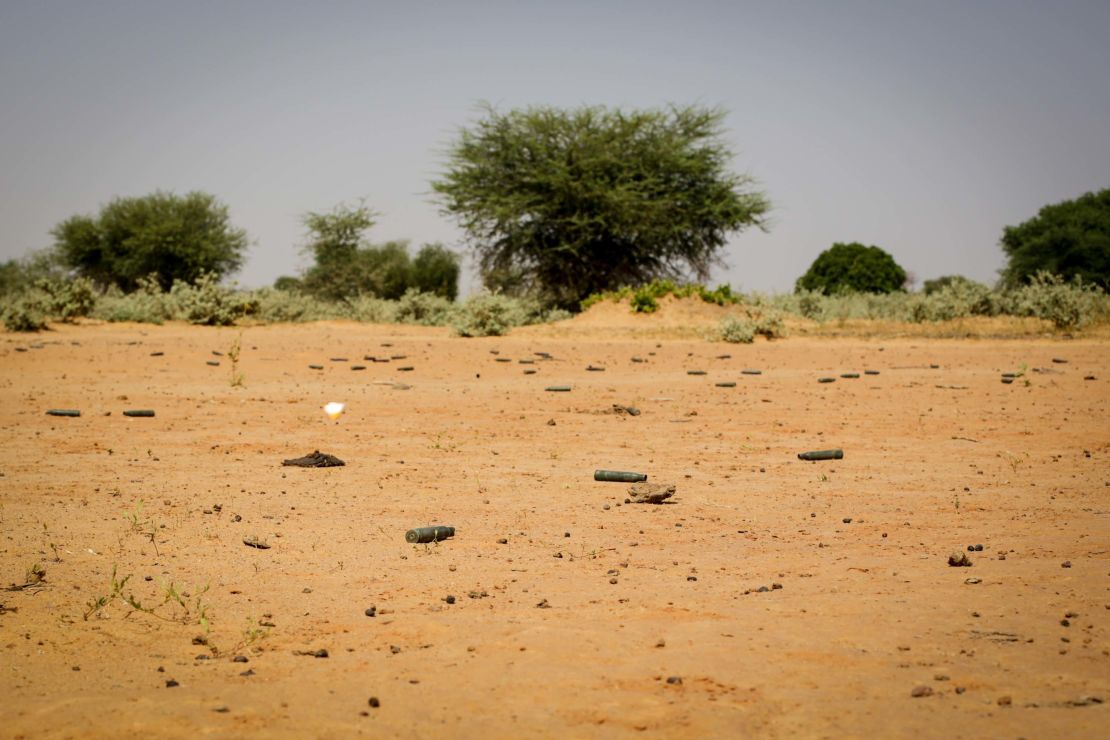The convoy’s progress is painstaking, the tracks it follows barely defined, at times though open terrain, at times through the thick wooded areas that worry the soldiers most. It makes ideal cover for an ambush, so they dismount and advance on foot before calling their vehicles forward.
We bump our way past villagers on donkeys, herds of camels and goats, and long stretches where there is no one in sight. There is a harsh and rugged beauty to the landscape in this volatile region of the Sahel, where outside of the major cities, people survive largely on what nature provides.
Bonds here are strongest along tribal and familial lines, and the reach of the capital governments in Niamey and Bamako can’t possibly extend far enough to control all of this vast territory.
The October 4th attack that killed four American soldiers, their translator and four Nigeriens has thrown this remote porous border region between Mali and Niger into the global spotlight, but for the Nigerien soldiers, the fight out here has been ongoing for years. They come under attack on a regular basis, and tell us that over the last two years the main threat has morphed from banditry to terrorism.
We headed out looking for answers to the many questions that continue to churn around the attack near the village of Tongo Tongo. It’s here that the US military said the convoy stopped to replenish supplies and was then held up by elders.
US officials told CNN last week that it was “quite probable” that someone in the village tipped off the ISIS-affiliated militants that US forces were in the village, setting up the ambush 10 kilometers (6 miles) down the road.
At one point our vehicle gets stuck in the sand, while another refuses to start in the extreme heat and a third gets a flat tire. It is all time ill-spent in the broader ambush zone that puts us and the soldiers on edge.
Some four hours after we veer off the main road – a wide dirt lane – we reach the outskirts of Tongo Tongo. The soldiers again dismount, fanning out into the dense vegetation that encircles about half the village.

The ground is littered with heavy caliber machine gun casings; no one can definitively tell us if they were fired by American, Nigerien or even enemy forces. But something definitely happened here – it could be where the first shots were fired, or perhaps the main ambush zone where besieged soldiers made their last stand.
Our escorts tell us we have ten minutes on scene. The village is small, maybe 30 or 40 single-room mud homes in all. Two men weaving in the shade balk at our arrival and insist that they were not here the day of the attack. A woman we approach shakes her head nervously and quickly walks away.
One man gestures as if he was shooting a gun and points towards the outskirts.
We manage to track down the detained village chief’s older brother and uncle. It was the village chief who led the soldiers to Sgt. La David Johnson’s body, a day and a half after the attack and roughly one kilometer away from the main site.
Both men swear on the Quran that they did not know the attackers. They say that the US-Nigerien convoy never actually stopped in their village, but was merely driving past when shots were fired from the school building – a single mud room on the outskirts, opposite the side that we approached from.
They tell us they had never seen Americans come through here before, never heard gunshots and explosions. They are afraid and confused.
They say that the villagers, terrified, hid inside their homes for hours until Nigerien soldiers came through and told them to come out.
Our escorts tell us it is time to leave, and we hurry past the burnt remains of the classroom. If the attack started here, the bullet casings we saw earlier could have been from the convoy when it raced off, or from the guns of soldiers who tried to flank their assailants.
As we speed away in a different direction, we drive over more bullet casings along the tracks, raising yet more questions about how large the battle zone was, and where, if at all, soldiers were able to take cover.
There are traces of burnt vegetation, consistent with witnesses’ reports that the militants started fires that acted as a smokescreen for French fighter jets who arrived on the scene two hours after the ambush began.
But our time in Tongo Tongo is too short-lived to yield many answers, and it’s clear just how complicated and murky the narrative and the war on terror in Niger has become.







